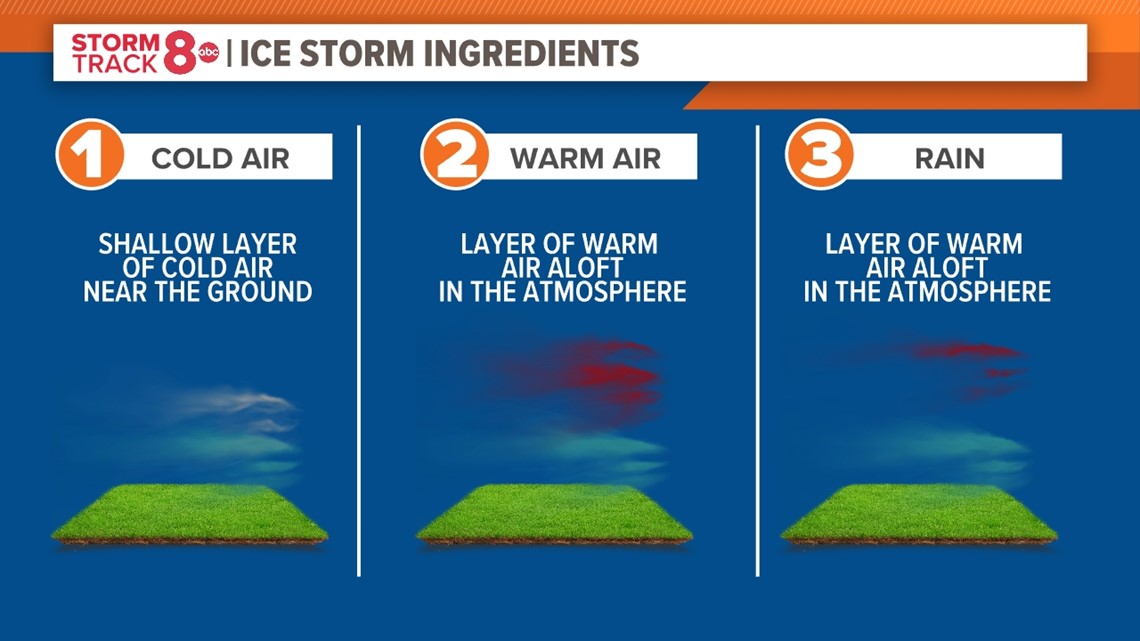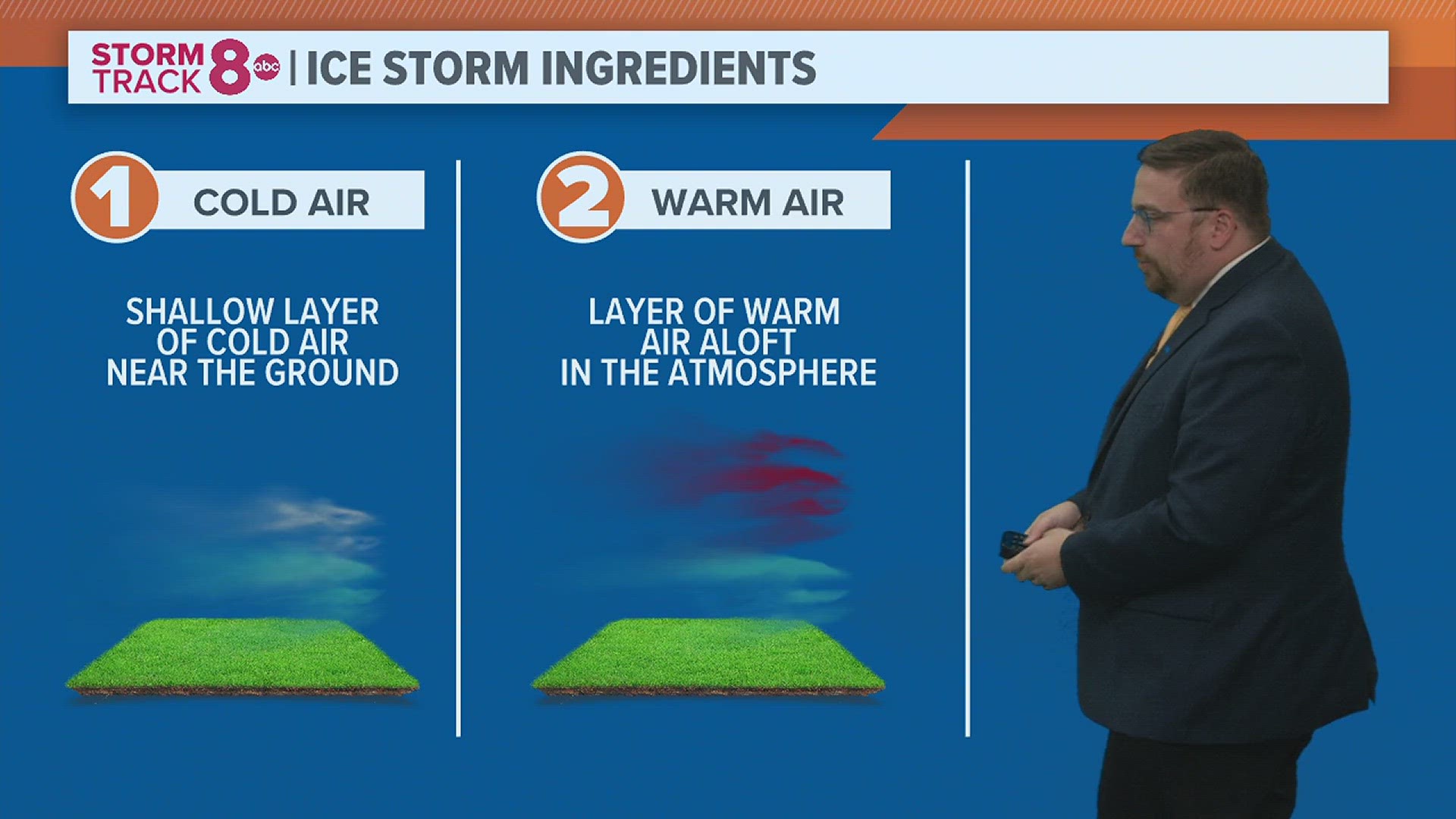MOLINE, Ill — Earlier this week we discussed the increasing probability of seeing a 'Super El Niño' for the upcoming winter and spring seasons. We also discussed how that pattern usually brings us a warmer-than-normal winter. Tim brought up this great question surrounding that pattern, asking, "With a warmer than normal winter we will see more ice storms?" Let's dig in.
Is there a link between ice storms and long-term weather patterns?
In order to see if there is a direct relationship between El Niño and La Niña patterns and ice storms, I went back and looked at all of the ice storm warnings that have been issued by the National Weather Service office in the Quad Cities. This dates back to 2006. Here's what I found:
February 16, 2006 - Weak La Niña
January 12, 2007 - Weak El Niño
February 24, 2007 - Weak El Niño
December 1, 11, 2007 - Weak El Niño
December 18, 27, 2008 - Weak La Niña
January 20, 2010 - Strong La Niña
January 27, 2013 - Neutral
February 5,7,12, 2019 - Neutral
February 22, 2023 - La Niña
In total, four years featured La Niña conditions while three featured El Niño. Two were neutral. While it's a small dataset, you still can't deduce that one pattern favors more ice storms over another.
The timescale is much smaller
Ice storms require a unique setup, as unique as a severe weather type of setup in that you need a certain set of ingredients to come together at the right time. In most cases, you need a stretch of really cold weather with a couple of days featuring bitterly cold temperatures, enough to cool down surfaces like pavement, power lines, and tree limbs to well below freezing.


This needs to be followed by a rapid warming event that can support rain throughout much of the atmosphere up until it reaches the surface. As long as the surface/ground temperature can remain below freezing, a classic freezing rain event is likely. You can imagine how variable and difficult it is to get these conditions to line up. It is also more difficult to forecast, too!


So, as of right now, there is no direct correlation to a warmer winter leading to more ice storms. Keeping an eye on the weather pattern and recognizing when the environment, especially temperatures are in the right alignment can make you more aware of when a potential ice storm may be brewing.
Have a question you would like me to answer for an upcoming Ask Andrew segment? Submit it, here.

